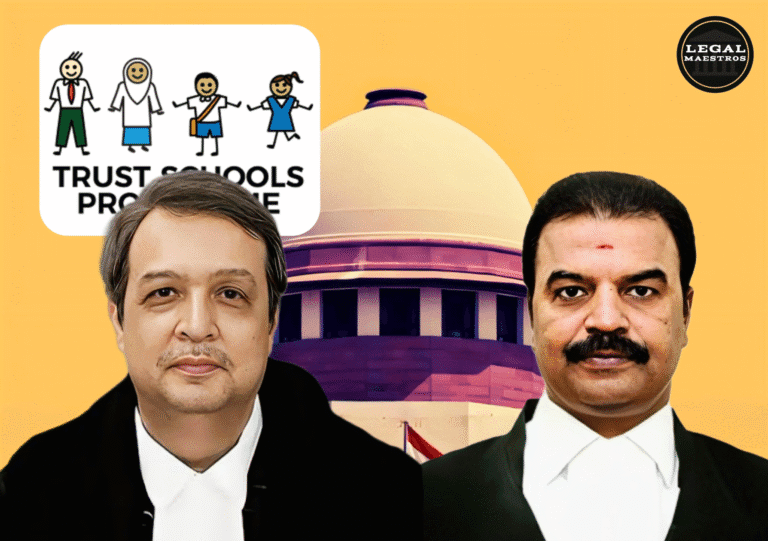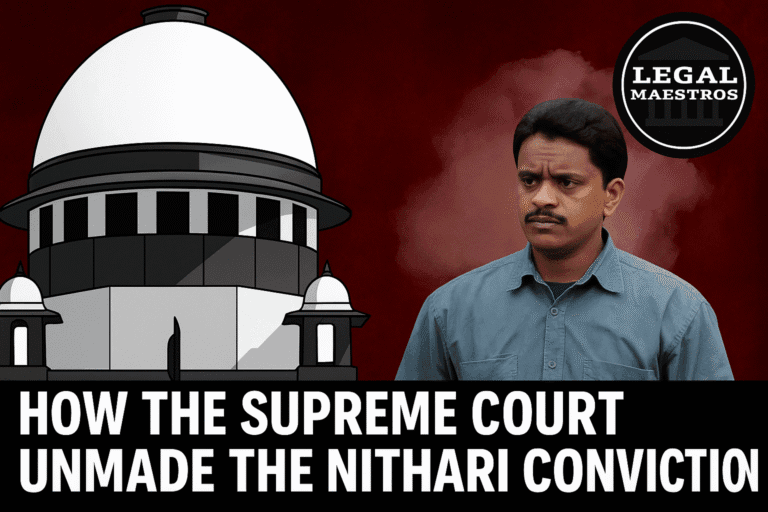
In a significant decision that was handed down in April 2025, the Supreme Court of India made it clear that the government benefits that are intended for disabled workers cannot be limited to a certain form of impairment if different types of disabilities fall under the same legislative category. Kashmiri Lal Sharma v. Himachal Pradesh State Electricity Board Ltd. and Others was a case that concerned a disabled government employee who was refused an extension of retirement age benefits purely due to the fact that his disability was locomotor and not visual. In a decision that was written by Justice Manoj Misra and joined by Justice K.V. Viswanathan, the Supreme Court granted a portion of the appeal and provided important direction for the legal principles that regulate equality in service conditions.
Details on the situation
After suffering from a persistent locomotor handicap of sixty percent, Kashmiri Lal Sharma, who had been working as an electrician for the Himachal Pradesh State Electricity Board since 1985, was unable to move around. Employees were required to retire at the age of 58, as stipulated by the service regulations that were in place at the time. It was in September of 2018 when Sharma achieved this age. The state government, on the other hand, issued an Office Memorandum (OM) on March 29, 2013, which increased the retirement age for visually challenged personnel from 58 to 60 years old.
Sharma presented representations requesting an extension of service because he was of the opinion that the same benefit ought to be applicable to all employees with disabilities who are covered by statutory disability rules regarding disabilities. He was not granted his desire. On September 30, 2018, he officially departed from his position. In order to request an extension of his service, he submitted a case to the Himachal Pradesh Administrative Tribunal prior to his retirement. A withdrawal of the OM was made by the state administration on November 4, 2019, while that lawsuit was still pending. Eventually, the tribunal was disbanded, and the subject was moved to the High Court for further consideration. One of his cases was dismissed by the High Court, which resulted in an appeal being filed with the Supreme Court.
For any queries or to publish an article or post or advertisement on our platform, do call at +91 6377460764 or email us at contact@legalmaestros.com.
The underlying legal problem
The primary legal issue that was brought before the Court was whether or not a benefit such as an extension of retirement age can be exclusively provided to workers who have one type of disability, such as vision impairment, while denying it to workers who have other types of disabilities, such as those who have locomotor problems. In order to accomplish this, it was necessary to interpret two important laws: the Persons with Disabilities (Equal Opportunities, Protection of Rights and Full Participation) Act of 1995 and the Rights of Persons with Disabilities Act of 2016, which succeeded the former law. Both statutes acknowledge a wide range of disabilities, including those that affect one’s ability to see and move around without assistance.
Other problems that were raised as a result of this case included whether or not executive instructions, known as Office Memorandums (OMs), could be retracted retroactively and whether or not such a withdrawal may eliminate claims that were already in progress.
A contention made by the appellant
The individual who filed the appeal said that the Ordinance of 2013 (OM), which raised the retirement age for visually impaired workers to sixty years old, was discriminatory because it excluded workers like him who also suffered from a particular impairment. According to his argument, such a distinction was in violation of Article 14 of the Constitution, which ensures that all individuals are treated equally before the law. He relied on previous decisions made by the Punjab and Haryana High Court, as well as the Supreme Court’s endorsement of those rulings in the case of State of Punjab v. Bhupinder Singh, which was decided in 2014. In that case, the Supreme Court came to the conclusion that equal retirement benefits should be applied to all infirmities that were recognized under Section 33 of the 1995 Act.
For any queries or to publish an article or post or advertisement on our platform, do call at +91 6377460764 or email us at contact@legalmaestros.com.
It was further brought to the appellant’s attention that his request for an extension of his service had been submitted a significant amount of time before he retired, and that the benefit of the OM ought to have been extended to him until its official withdrawal in 2019.
Opinions expressed by the Respondents
At the time of Sharma’s retirement in September 2018, the State Electricity Board advanced the argument that the 2013 OM explicitly applied only to personnel who were visually handicapped. The appellant did not have the legal right to request an extension, thus they did not demand one. As an additional point of contention, it argued that the eventual withdrawal of the OM in 2019 was within the bounds of the law and that no advantage could be maintained after this policy was disregarded.
The respondents went on to indicate that the government has the ability to change service conditions, including the age at which employees are eligible to retire, and that employees do not have the fundamental right to demand that they continue to work beyond the age at which they are eligible to retire.
For any queries or to publish an article or post or advertisement on our platform, do call at +91 6377460764 or email us at contact@legalmaestros.com.
A Study Conducted by the Supreme Court Concerning Equality and Disability
In its initial statement, the Supreme Court made reference to its previous decision in the case of Bhupinder Singh v. State of Punjab. In that case, the court had unequivocally established that the benefits that are provided by disability law must be uniformly offered to all groups of individuals who have baseline disabilities. The Court took note of the fact that the statutes pertaining to disabilities that were passed in 1995 and 2016 both indicate that individuals with visual, hearing, and locomotor disabilities are entitled to equal protection and benefit under the law.
According to the decision of the Court, there was no reasonable justification for limiting the advantage of longer service to only those employees who were visually impaired. Following the recognition of a class of beneficiaries by the state in accordance with a statute such as the disability law, the state was not permitted to unilaterally exclude particular subcategories. In its decision, the Court stated that the advantage of an extended retirement age ought to have been applicable to all government employees who were recognized as having a benchmark disability, which includes locomotor disability.
Whether or whether the Office Memorandum Can Be Withdrawn Validities
The Court next shifted its attention to the question of whether or not the government was within its powers to remove the 2013 OM in 2019, after having addressed the issue of equality. According to the General Clauses Act, the Court decided that the government has the jurisdiction to revoke the benefit by another Office Memorandum because it was granted through an Office Memorandum rather than through a change to statutory service rules.
For any queries or to publish an article or post or advertisement on our platform, do call at +91 6377460764 or email us at contact@legalmaestros.com.
However, the Court also made it clear that any benefit that had previously been accrued under a legitimate policy could not be taken away arbitrarily unless the withdrawal was implemented prospectively. Due to the fact that Sharma had previously submitted his claim and was qualified for the benefit during the time that the policy was still in place, he was eligible to receive it up until the point that it was withdrawn.
Concluding Remarks and the Provision of Relief
Additionally, the appeal was granted in part by the Supreme Court. It overturned the decision of the High Court to reject the writ case and declared that Sharma was eligible to receive the benefits of the 2013 OM beginning on October 1, 2018, the date immediately following his retirement, and continuing until November 4, 2019, when the policy was withdrawn. For this lengthy period of time, the Court ordered that Sharma be paid his full salaries as well as any and all service benefits that were a consequence of his employment, including for the purpose of calculating his pension.
The Court, on the other hand, acknowledged the legitimacy of the policy withdrawal and did not award Sharma a prolongation of his service beyond November 4, 2019.
For any queries or to publish an article or post or advertisement on our platform, do call at +91 6377460764 or email us at contact@legalmaestros.com.
Principles of Law That Have Been Established
In its decision, the court established a number of fundamental principles. The constitutional promise of equality was reaffirmed, and it was stated that executive perks related to service conditions must comply with the constitutional guarantee. It is not possible for the government to selectively provide rights to certain disabled individuals while discriminating against others who are recognized under the same statutory framework.
Additionally, the ruling made it clear that executive directives, such as Office Memorandums, can be withdrawn by competent authority, provided that a service rule is not legally altered. However, according to the decision, such a withdrawal must not retrospectively affect claims that have already been incurred under the former policy.
The Significance of the Decision
This decision will have significant repercussions for public employment, particularly for those who are disabled that are employed by the government. It assures that any benefit that is awarded to a category of impaired employees must be universally extended to others who are similarly placed, unless there is a clear and non-arbitrary reason for differentiation between the two groups of employees.
For any queries or to publish an article or post or advertisement on our platform, do call at +91 6377460764 or email us at contact@legalmaestros.com.
In addition to this, it acts as a reminder to state governments and other public organizations that disability rights are not favors but rather legally enforceable entitlements. As a result of the Court’s stress on non-discriminatory treatment across all categories of benchmark disabilities, the objective of India’s disability laws is strengthened, and the laws are aligned with the constitutional ideals of equality and decency.
The landmark ruling that the Supreme Court made in the case of Kashmiri Lal Sharma v. Himachal Pradesh State Electricity Board Ltd. represents a significant step forward in the fight for equality for disabled workers in the public sector. The idea that policies that have an effect on basic rights must be fair, just, and reasonable has been strengthened by the Supreme Court’s decision that benefits cannot be limited to a specific type of disability and must apply to all infirmities that have been stated. It is not only the ruling that restores the petitioner’s dignity, but it also establishes a progressive precedent for the legal treatment of people with disabilities in India.






![Research Assistantship @ Sahibnoor Singh Sindhu, [Remote; Stipend of Rs. 7.5k; Dec 2025 & Jan 2026]: Apply by Nov 14, 2025!](https://legalmaestros.com/wp-content/uploads/2025/11/Gemini_Generated_Image_s0k4u6s0k4u6s0k4-768x707.png)
![Karanjawala & Co Hiring Freshers for Legal Counsel [Immediate Joining; Full Time Position in Delhi]: Apply Now!](https://legalmaestros.com/wp-content/uploads/2025/11/Gemini_Generated_Image_52f8mg52f8mg52f8-768x711.png)
2 thoughts on “Locomotor Disability and Retirement Rights: Justice Manoj Misra on Equality in Service Conditions”